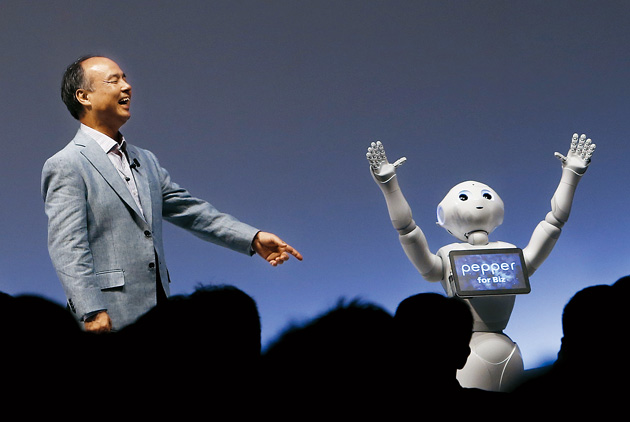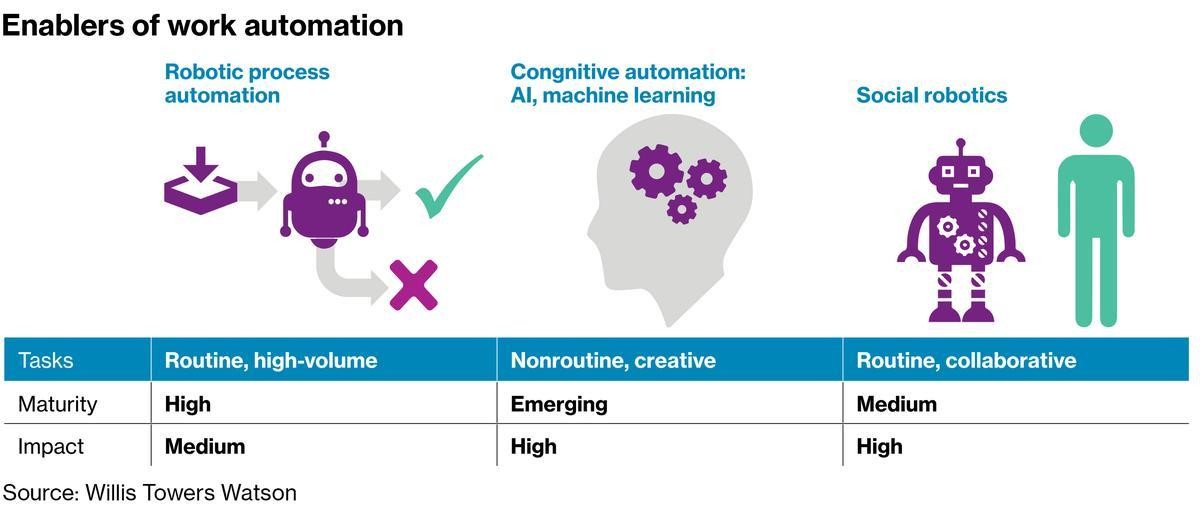The Rise of AI & Automation
How Machines Will Not Replace Human Workers

Source:CW
It's reasonable to be alert that AI and automation can eliminate jobs. However, it's also irrational not to look into the benefits and higher productivity brought along with human-machine collaboration. At certain point we will have to ask the question: Do machines necessarily have to compete with humans?
Views
How Machines Will Not Replace Human Workers
By Ravin Jesuthasanweb only
It’s time to move beyond alarmist rhetoric about workplace automation and consider how human-machine collaboration can deliver a higher level of productivity. The question to ask isn’t how many jobs will be replaced by artificial intelligence (AI) and robotics, but how work can be reconfigured in order to achieve the optimal integration of talent and machines.
The following four-step approach can help organizations grappling with this issue:
1. Start with the Work Not the Job
The digitalization of the workplace gives organizations a new set of options for getting work done. Traditional jobs can be deconstructed into independent, component tasks to be completed anywhere in the world by employees, talent on platforms such Upwork or Topcoder, freelancers, alliance partners and, yes, automation.
Consequently, in deciding how to best integrate humans and machines, the focus should be on the work, not jobs. From this starting point, organizations can begin to separate routine work, which is best accomplished by automation, from more variable, interactive work, which requires human skills such as empathy and creativity.
But, which tasks are most suited to automation, and how can organizations select the best tools for a given task?
2. Understand the Automation Opportunities
It’s essential to understand the three key automation technologies and the work for which each technology is best suited, as this chart shows.

Robotic process automation (RPA): The most mature of the three technologies, robotic process automation (RPA), automates high-volume, low-complexity, routine business processes. Examples of these processes include updating employee contact and payroll data, or transferring data from one software program to another, such as from a spreadsheet to a CRM system.
RPA can improve the speed and accuracy of these processes. Take the example of a credit analyst who performs many data analyses and synthesis tasks, including examining data from bank records, credit-rating agencies, tax filings, etc. A bot – an application running automated scripts – can perform these tasks faster than a human, with no errors, enabling the analyst to process loan applications faster, and so improve customer service.
Cognitive automation: Cognitive automation, which includes AI and machine learning, is often used to augment or replace human capability in non-routine, complex tasks. Because cognitive systems can both quickly sift through massive amounts of data, and also learn, their expertise in different areas improves over time, increasing an organization’s knowledge base.
For instance, a bank call centre might use cognitive virtual agents to answer common transactional questions, freeing up the time of human agents to focus on issues requiring empathy and a human touch – such as dealing with customers who are thinking of switching banks.
 Automation can eliminate jobs, but it will also help human workers add greater value. (Image: REUTERS/Benoit Tessier)
Automation can eliminate jobs, but it will also help human workers add greater value. (Image: REUTERS/Benoit Tessier)
Social robotics: Social robotics involves the combination of physical equipment, AI, sensors and mobility, resulting in machines that interact with humans in the physical realm.
For an example of social robotics, look no further than Amazon’s Kiva robots that work alongside employees in Amazon’s warehouses. Using these robots, Amazon has eliminated the dangerous, time-consuming task of workers walking the warehouse floor to pick items. Instead, the robots pick the items and bring them to workers, who then assemble the packages destined for Amazon customers.
3. Identify the Optimal Combinations of Work Options
Deconstructing jobs into component tasks makes it easier for organizations to determine where it makes sense to use automation and where human workers can add more value. For example, market analysis tasks might be separated from a marketing manager’s work and performed by a cognitive system at a marginal cost. Such an approach creates an opportunity for the marketing manager to spend more time on higher-value activities that require empathy and creativity — for example, strengthening customer relationships via social media, or improving team engagement.
4. Reset Leadership Expectations
Success in the new world of work requires the ability to lead, often without formal authority, in networked organizations, where the sources of work are plentiful and the work relationships are equally numerous. Leaders will need vision and new skills to orchestrate this new work ecosystem.
Our analysis reveals that across industries, those companies that deconstruct jobs and distribute the work using the most efficient and effective human-automation combinations can often realize savings of 60% to 80%. This can frequently be achieved along with significant improvements in the organization’s speed to capability and risk profile.
While in some cases automation may eliminate jobs, in many other instances it will help human workers add greater value by augmenting their capabilities and creating new, often more fulfilling work.
Additional Reading
♦ A Major Risk of Automation
♦ Should People Fear Robots?
♦ My Dance Partner Is Not A Human
♦ AI: A Wave Taiwan Must Ride
Original content can be found at the website of World Economic Forum.
♦ 4 ways the rise of the machines can work for humans
This article is reproduced under the permission of World Economic Forum (WEF) and terms of Creative Commons Attribution-NonCommercial-NoDerivs 4.0 Unported License (“CCPL”). It presents the opinion or perspective of the original author / organization, which does not represent the standpoint of CommonWealth magazine.







